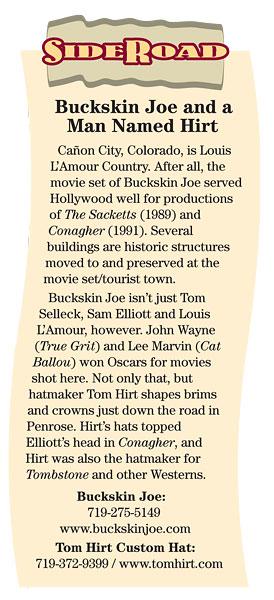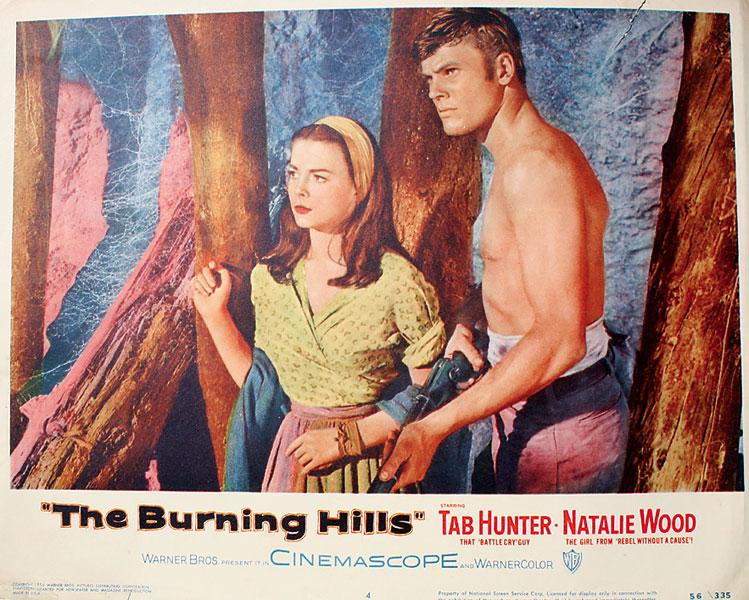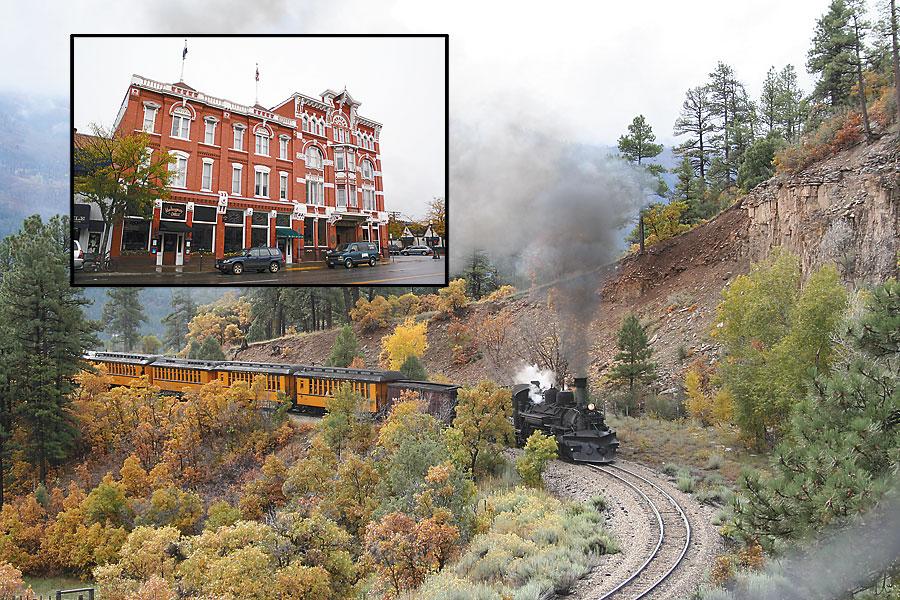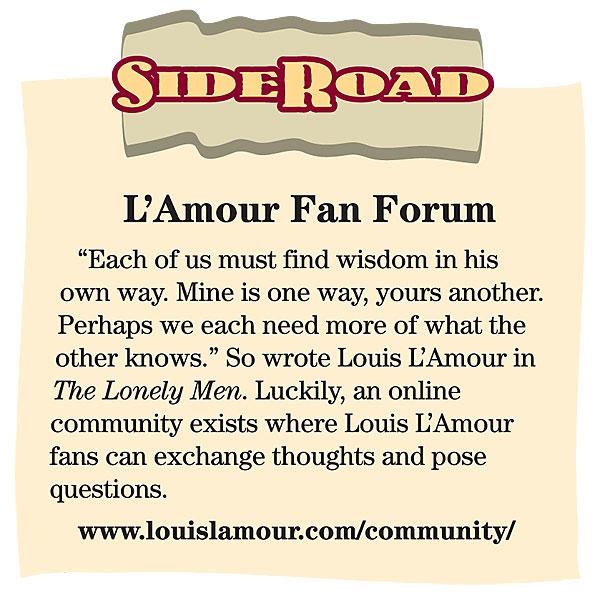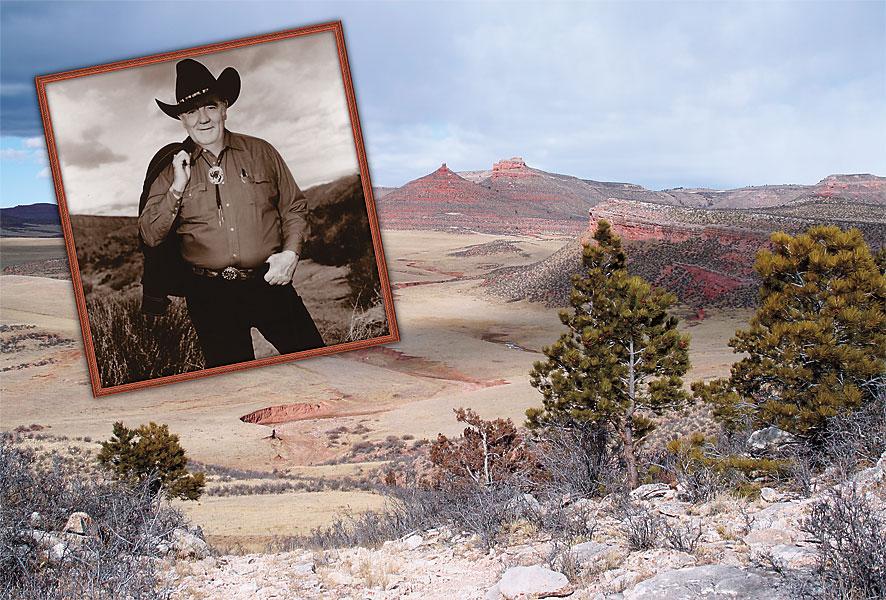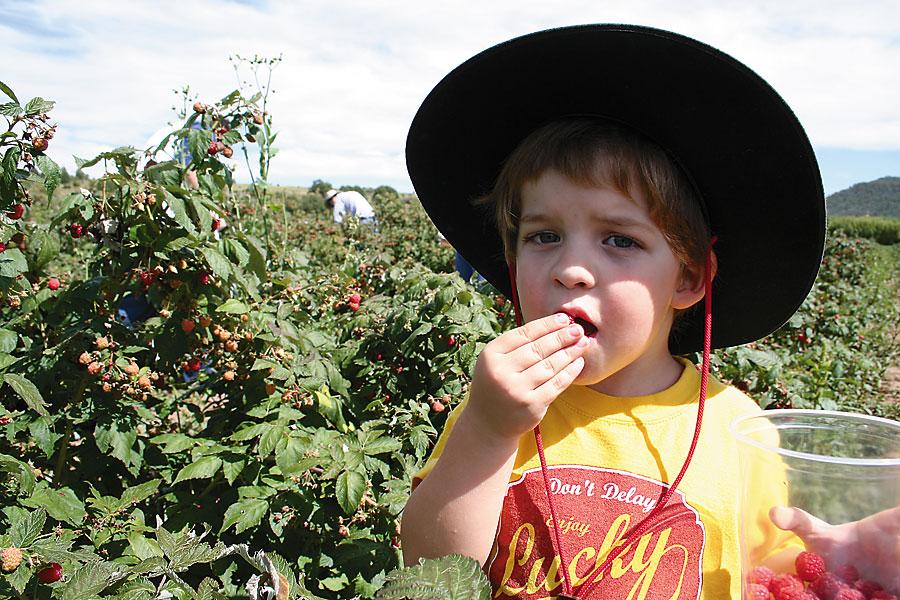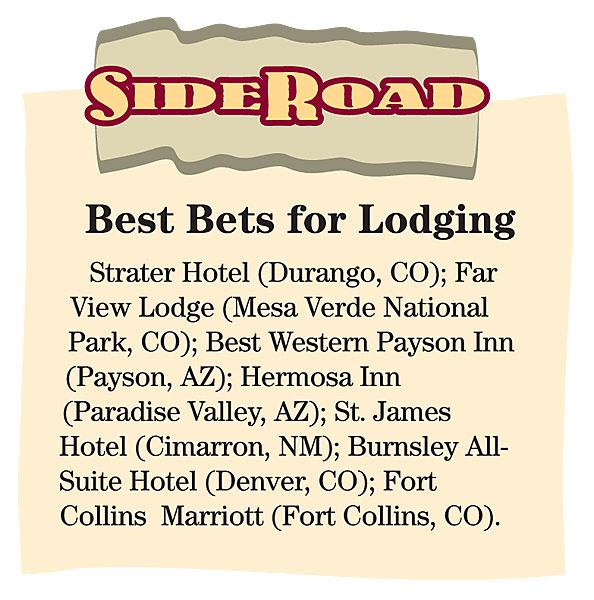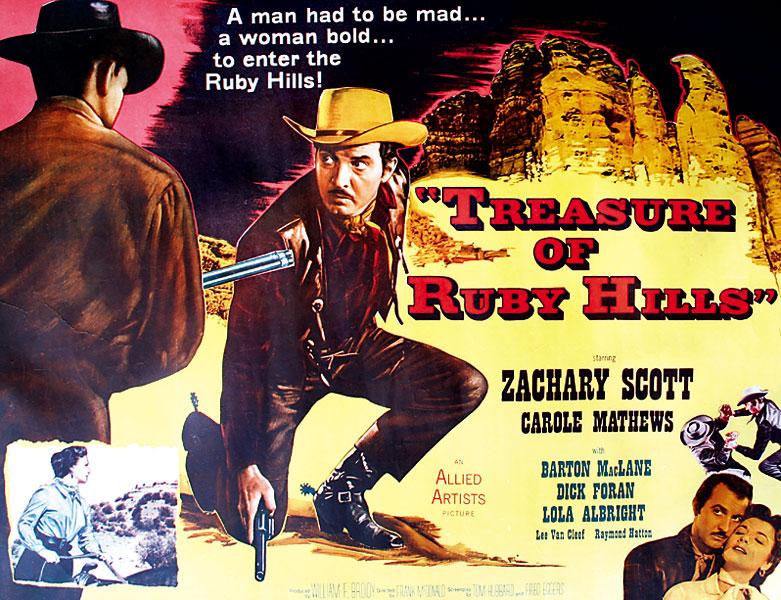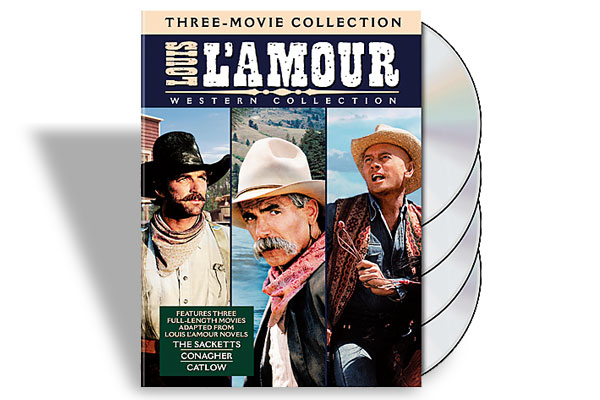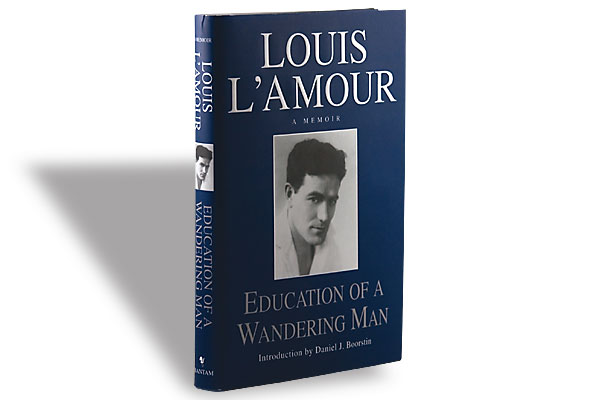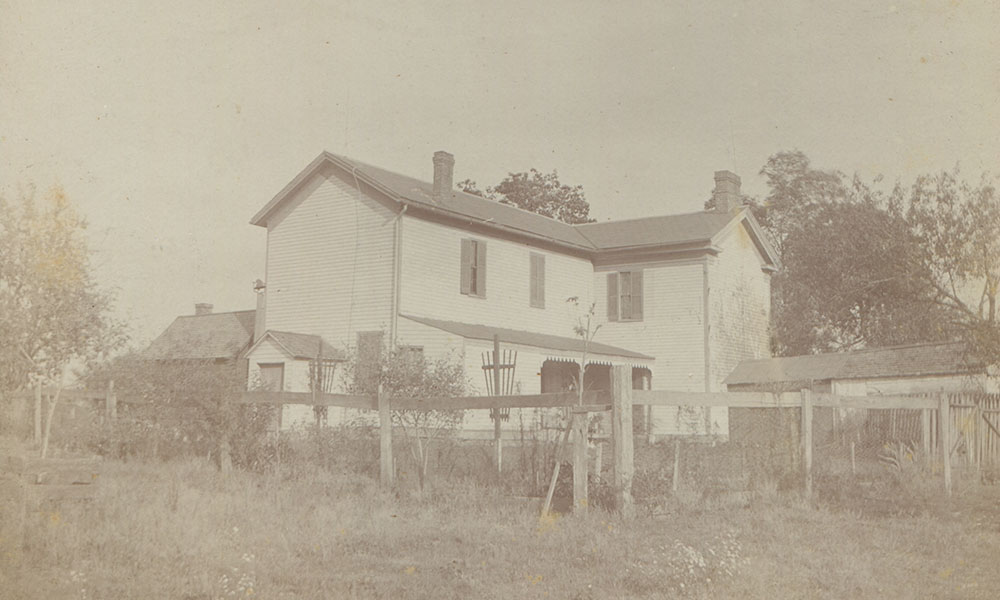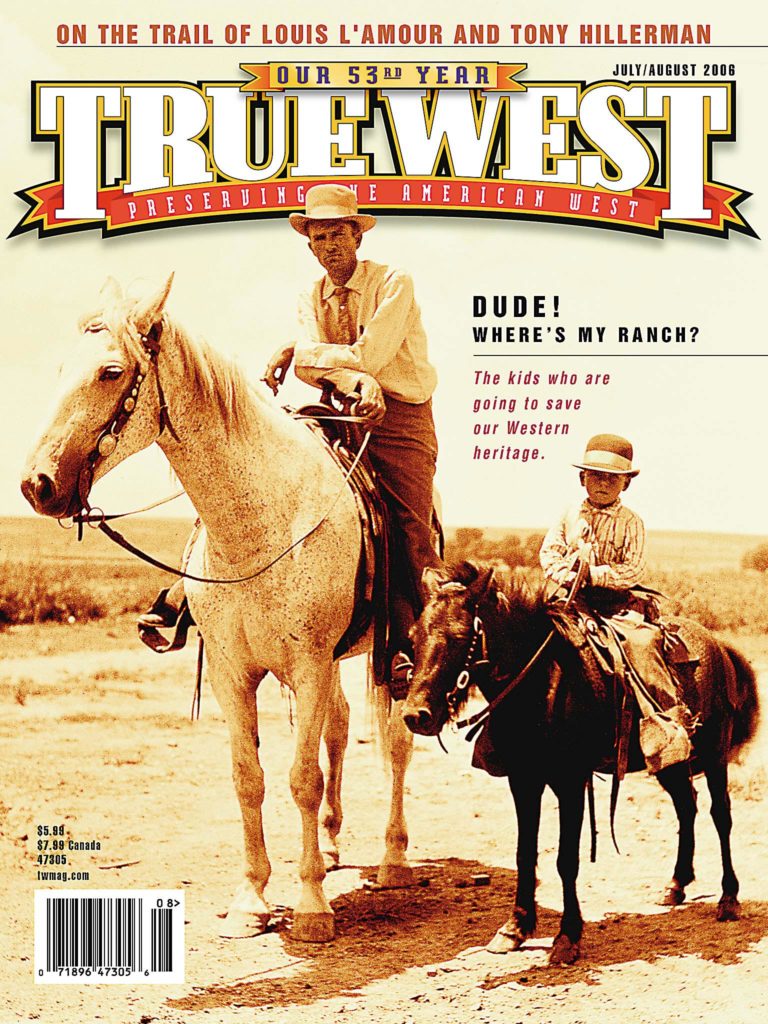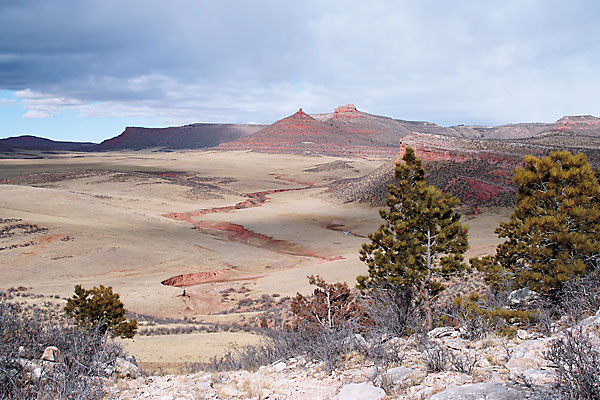 He sat motionless, starin’ ahead, aware of everythin’ around him. In this country, patience meant survival. Too often, the first to move became the first to die.
He sat motionless, starin’ ahead, aware of everythin’ around him. In this country, patience meant survival. Too often, the first to move became the first to die.
Crossin’ U.S. 550 can be a bitch.
Seein’ a quick openin’, he gunned across the intersection and found his way to downtown Durango, Western town, tourist town, train town and the Colorado mountain burg where the man he chased once hung his hat.
The man he chased was legend. Louis L’Amour, teller of tales, mostly Western. Creator of the Sackett clan. Inventor of other heroes with names such as Flint and Chantry and Conagher and Noon. Winner of the Spur Award, the National Gold Medal, the Medal of Freedom. A man whose fans included Presidents Carter, Reagan and Eisenhower. A writer whose books in print totaled ’round 270 million.
The trail could have begun in Jamestown, North Dakota, where Louis Dearborn L’Amour was born in 1908. Or Los Angeles, L’Amour’s home, where he died in 1988. But Durango filled the bill. Settin’ several books in southwestern Colorado, L’Amour spent many a summer soakin’ up the atmosphere at the Strater Hotel. Later, he owned a ranch just outside of town.
The man chasin’ the legend could see why L’Amour loved the Strater. It’s historic, built in 1887, pretty convenient if you’re ridin’ the Durango & Silverton Narrow Gauge Railroad. L’Amour loved room 222. He liked the ruckus bein’ raised just below in the Diamond Belle Saloon. Put him in the mood to write Westerns. Food’s mighty tasty, too.
Animas City got a mention or two in L’Amour’s books. Animas City is gone, though, incorporated into Durango’s city limits, but the Animas Museum over on Second Avenue is a pretty good spot. Even had some files on L’Amour. The man checked them out, wonderin’ if L’Amour ever did any research here, then made a beeline for Silverton.
The Proving Trail
“If Louis L’Amour says there’s a rock in one of his stories, you can go there and find that rock.” The man thought about that as he wound up mountain roads. If he had a dime for every time he had heard that sayin’, to his figurin’, he wouldn’t have to write travel stories to pay his bar tab.
The man liked Silverton. The train stopped in town, lettin’ off tourists to wander its Western streets. Silverton could pass for many a town mentioned in many a L’Amour story. Like The Proving Trail. Yep, this was L’Amour Country.
But the trail had gone cold. Mainly because of the snow. Snow in early fall. Well, L’Amour wrote about that, too.
The man drove back to Durango and turned west, west toward Mesa Verde and The Haunted Mesa. That 1987 novel was science fiction as much as Western, contemporary Western at that, the last original novel published durin’ L’Amour’s life.
Yet, he understood L’Amour’s fascination with the mystery of the Anasazi. Loved the adventure of gettin’ to Balcony House. Besides, it was cowboy country. Didn’t cowboys discover the ruins at Chapin Mesa? The man hated to leave the park—especially the elk tenderloin at the Metate Room at Far View Lodge—but L’Amour wasn’t here. So he drifted toward Cortez.
Not So Empty Land
Folks called this the Four Corners, where the borders of Utah, Colorado, Arizona and New Mexico meet. L’Amour often claimed to be buildin’ an 1865 Western (tourist) town named Shalako, “historically authentic from whistle to well.” Wasn’t here, though. Never got built. The land was sold, accordin’ to www.louislamour.com, and the dream bit the dust. So the man chasin’ the legend headed south.
South into New Mexico, near the settin’ for Showdown at Yellow Butte and into Gallup (Tony Hillerman Country, see p. 81), then over to Arizona, finally stoppin’ at the stampin’ grounds of another Western icon down in Payson. After all, would Louis L’Amour have made a career writin’ Westerns if Zane Grey hadn’t come along first?
Burnin’ Hills
Grey, of Riders of the Purple Sage fame, fell in love with the Rim Country and penned several novels in a cabin near Tonto Creek between 1918-29 before his death in 1939. The cabin was destroyed by fire in 1990, but, like L’Amour, Grey had many fans in this mesmerizin’ country. One was a dude named Dick Wolfe, president of the Zane Grey Cabin Foundation. He helped re-create the cabin, which was dedicated last fall. Mighty impressive. They sell a lot of books in the gift shop. Zane Grey books.
But not much L’Amour, so the man rode south toward Phoenix. He had heard tell that L’Amour joined a circus in Phoenix durin’ the 1920s, and L’Amour never was a stranger to Arizona. Kid Rodelo and Last Stand at Papago Wells were set in the state, as was The Broken Gun, which Hollywood turned into a movie with Bob Hope in the lead. Bob Hope? The man always wondered what L’Amour thought about Hollywood, which also turned the leathery Heller with a Gun into a not-that-funny Heller in Pink Tights.
Hangin’ his hat at the Hermosa Inn, pretty fancy digs, the man was reminded of The Broken Gun ranch, only the folks runnin’ Hermosa were friendlier. Lon Megargee called the Hermosa home in the 1930s, and the artist later opened it as a guest ranch. Fred and Jennifer Unger took it over back in ’92. The man found a number of L’Amour books in the library. Fittin’. L’Amour wore Stetsons, and Megargee might best be known today for Stetson. Take off your hat, pard. Look inside. That cowboy waterin’ his horse with his hat. That’s a Megargee paintin’.
Law of the Desert Born
The man stumbled upon other traces of L’Amour in the Phoenix metro. Mighty good Indian history over at the Heard Museum. Old buildin’s and that smell of desert dust at the Pioneer Arizona Living History Village. Authentic-lookin’ duds at Wild West Mercantile in Mesa. And plenty of great books at Guidon Books in Scottsdale.
Only it was time to push on, east past Tucson. This was Cochise territory, and the man loved campin’ in the Cochise Stronghold in the Dragoon Mountains. He savored the views at Chiricahua National Monument, and he got some exercise hikin’ to Fort Bowie National Historic Site.
In many ways, L’Amour made his mark here. You see, he wrote a story that Collier’s published, a little gem called “The Gift of Cochise.” John Wayne took a fancy to it, bought the rights, had James Edward Grant turn it into a movie. L’Amour then turned the screenplay into a novel, and Hondo became a classic Western, both movie and book. It was set down here. And the country, the man thought, looked just like it did in the book.
Time to move on, and he had to travel fast, like the pacin’ in a L’Amour book. Over to New Mexico. Lordsburg—Ernest Haycox Country, though Shalako took place in New Mexico’s bootheel. Then Reserve, and across the San Agustin plains—Elfego Baca Country, though it also served L’Amour well, ’specially in Conagher. Socorro (The Man Called Noon wandered ’bout here), and finally Santa Fe, which figured in plenty L’Amour books. By grab, Orrin Sackett was aimin’ to become state senator at the end of The Daybreakers (even though New Mexico wouldn’t become a state for another 30-40 years).
The Sackett Brand
He rested in Santa Fe, then lit a shuck north. So close to the Mora Gunfighter, he could almost taste it. The Mora Gunfighter. Tyrell Sackett. Another L’Amour hero. Tasted like … hmmm … raspberries? The way L’Amour told things, the Sackett ranch lay near Mora, north of Las Vegas. Odd, the man thought. He always figured the Sacketts raised cattle, but the only ranch he found was the Salman Raspberry Ranch. Raspberries galore that strangers picked themselves (in season), and that jam for sale sure tasted better than anythin’ Cap Rountree ever whipped up.
Next, he stopped in Cimarron. The St. James Hotel was popular with L’Amour. You’ll find it in Showdown at Yellow Butte (in a town called Mustang) and North to the Rails (where L’Amour mistakenly wrote that he was in Nevada). You’ll find the St. James in history books, too. Bat Masterson spent the night here. So did Annie Oakley. Bullet holes peppered the hotel’s ceilin’. Sometimes the West was as wild as a L’Amour tale.
The Cherokee Trail
He moved on, though, into Colorado, restin’ a spell in Denver. Nothin’ like Saturday night at the Buckhorn Exchange, and the man had a big admiration for that great scout buried atop Lookout Mountain over in Golden. Yep, Louis L’Amour and Buffalo Bill Cody had much in common.
Eventually, the man found his way to Fort Collins, aimin’ at followin’ the Cherokee Trail. Cherokee Station is on private land today, but the
owner guided him to the historical marker. Wasn’t much left of where L’Amour had a heroine named Mary Breydon runnin’ things, but the Virginia Dale station just up the road offered tours by appointment.
While the man found himself wonderin’ if L’Amour actually walked this ground, a local historian shook his head in wonderment at L’Amour’s gift at describin’ the country. L’Amour would have been a great geography teacher, the historian was sayin’.
Back in his hotel room, the man rested. Another trail gone cold, and yet, not so cold. Everywhere he looked, he realized, he found this L’Amour gent. L’Amour’s Country was the West, no matter the locale. California (The Lonesome Gods) or Wyoming (Bendigo Shafter). Texas (The First Fast Draw) or Nevada (Comstock Lode). From Alaska (Sitka) to the Carolinas (Fair Blows the Wind).
For better than five decades, L’Amour was still keepin’ the West alive. Maybe not the true West, maybe just a myth some say should be buried ’neath Kansas sod. But one thing’s certain. Millions of readers still believe in him, find comfort in his stories.
The man opened a paperback, started readin’. “Where the wagons stopped we built our homes, making the cabins tight against the winter’s coming. Here in this place we would build our town, here we would create something new.”
He felt … comfortable.
Although he’s a fan of Hondo, Johnny D. Boggs’ favorite Western novelist is Johnny D. Boggs. Well, actually, he prefers Jack Schaefer and Will Henry.
Photo Gallery
Louis L’Amour (inset) considered himself to be “just a storyteller, a guy with a seat by the campfire.” One setting for his novels, the Cherokee Trail, cuts through some spectacular country, including a harrowing ride down the Devil’s Washboard (above) between Fort Collins and Virginia Dale, Colorado.
– All images by Johnny D. Boggs unless otherwise noted;


